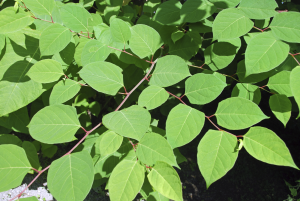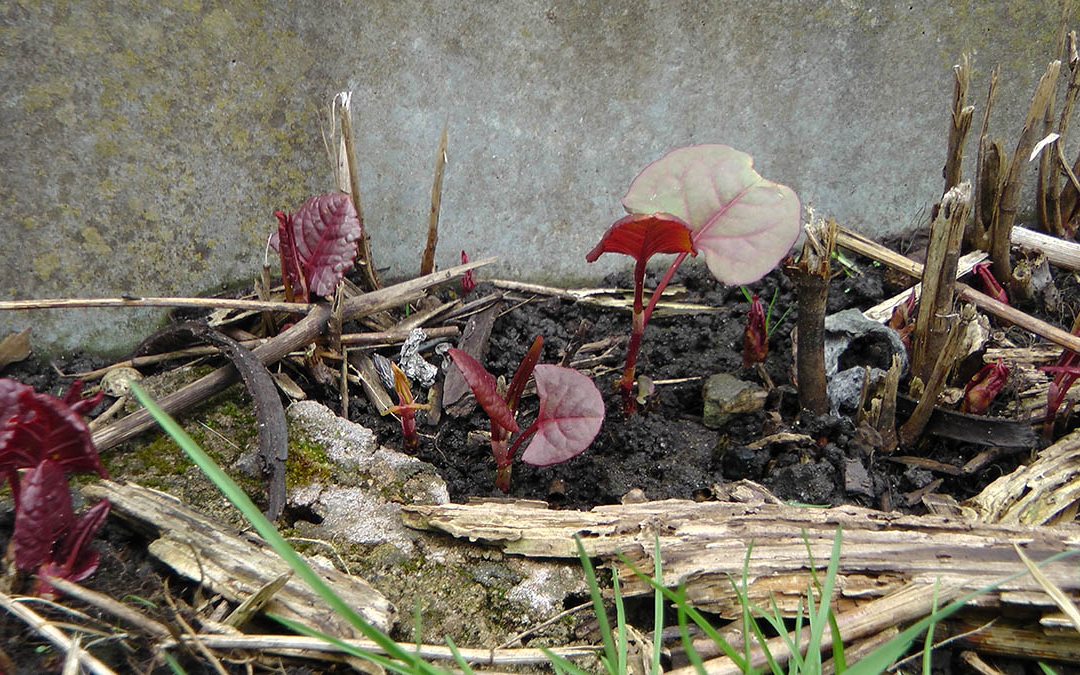Japanese knotweed is a invasive plant that can cause damage to your property
Homeowners often have questions about the plant
its impact, and how to control its growth. This article explores the most common questions homeowners ask about Japanese knotweed.
Japanese knotweed is a highly invasive plant species that Has the potential cause significant damage to your property. It can grow up to 3 meters in height and spread rapidly through its root system. Rhizomes can grow through small holes and cracks walls and foundations, causing damage to the structure of the building. Homeowners often have questions about the plant, its impact, and how to control its growth. In this article, we will explore the most common questions homeowners ask about Japanese knotweed.
What is Japanese Knotweed?
Japanese knotweed is a highly invasive plant species that originates from East Asia. It was introduced to the UK in the 19th century as an ornamental plant. Since then, it has become a significant problem due to its aggressive growth and destructive nature.
How Does Japanese Knotweed Spread?
Japanese knotweed spreads through its underground root system and stem fragments. The plant can spread rapidly and is often introduced to new areas through contaminated soil or through the movement of contaminated equipment and machinery.
What are the Risks Associated with Japanese Knotweed?
Japanese knotweed can cause significant damage to your property. It can grow through concrete and tarmac, causing structural damage to your property. The plant’s presence can also decrease the value of your property, making it more challenging to sell.
Japanese knotweed can negatively impact other plants:
- Competition for resources: Japanese knotweed grows rapidly and forms dense stands, shading out and depriving other plants of sunlight, water, and nutrients. This competition can hinder the growth and survival of nearby plants, including native species.
- Displacement of native plants: Japanese knotweed has a vigorous root system that can spread widely underground, forming dense networks. As it expands, it can outcompete and displace native plants, reducing the biodiversity and ecological balance of an area.
- Allelopathy is a biological phenomenon in which certain plants release chemicals into the environment that can influence the growth, development, or survival of other nearby plants. These chemicals, known as allelochemicals, can be released through various means such as roots, leaves, flowers, or seeds.
The purpose of allelopathy
Is often to gain a competitive advantage by inhibiting the growth or germination of neighbouring plants. The allelochemicals can interfere with essential processes in other plants, such as photosynthesis, nutrient uptake, or cell division. This can result in reduced growth, wilting, or even death of the affected plants.
Allelopathy is a fascinating ecological mechanism that can have both positive and negative effects on plant communities. Some plants have developed allelopathic relationships as a defense mechanism against herbivores or to suppress the growth of potential competitors. However, excessive allelopathic effects can also be detrimental to the biodiversity and productivity of ecosystems.
Researchers study allelopathy
to understand its implications for agriculture, forestry, and ecological management. By understanding the interactions between plants and the chemicals they release, it becomes possible to utilize allelopathy in weed control, crop improvement, or the restoration of degraded environments.
- Soil erosion and disturbance: The extensive root system of Japanese knotweed can weaken soil structure, making it more susceptible to erosion. As it spreads, it can disrupt the stability of riverbanks, slopes, and other natural habitats, leading to further ecological degradation.
- Habitat alteration: The dense stands of Japanese knotweed can alter the physical structure and composition of ecosystems. This can impact the availability of suitable habitats for native plants and other organisms, leading to changes in plant communities and associated wildlife.
Japanese knotweed can also lead to legal action if it spreads to neighbouring properties.
If you allow Japanese knotweed to spread to your neighbour’s property, there can be several consequences. Japanese knotweed is an invasive plant species that grows rapidly and can cause damage to buildings, infrastructure, and ecosystems. Here are some potential outcomes:
- Legal issues: Allowing Japanese knotweed to spread onto your neighbour’s property can lead to legal disputes. Your neighbour may take legal action against you for negligence and the resulting damage caused by the plant.
- Property devaluation: Japanese knotweed is known to decrease property values. If the plant spreads to your neighbour’s property and affects their land or buildings, it can significantly reduce the value of their property.
- Structural damage: Japanese knotweed has strong and extensive root systems that can penetrate through small holes in foundations, walls, and pavement. If it spreads to your neighbour’s property, it can cause structural damage to their buildings, leading to costly repairs.
- Ecological impact: Japanese knotweed grows very quickly and can outcompete native plant species, reducing biodiversity. If it spreads to your neighbour’s property and establishes itself there, it can negatively impact the local ecosystem and disrupt the natural balance.
- Financial liability: If your neighbour can demonstrate that the spread of Japanese knotweed from your property caused damage to their land or buildings, you may be held financially liable for the cost of remediation, removal, and repairs.
It is essential to take appropriate measures to control and manage Japanese knotweed on your property to prevent its spread to neighbouring areas. Consulting with professionals, such as invasive species experts or landscape management companies, can help you develop an effective strategy to address the issue responsibly.
How to Control Japanese Knotweed Growth:
Controlling Japanese knotweed growth can be hard, but there are several methods available, including chemical treatments, excavation, and root barrier systems. It is essential to work with a qualified professional to determine the best method for your situation.
How to Identify Japanese Knotweed:
Japanese knotweed can be identified by its heart-shaped leaves, bamboo-like stems, and white flowers. The plant can grow up to 3 meters in height and is often found near water sources.

Japanese Knotweed leaves
Can Japanese Knotweed Be Removed Completely?
Completely removing Japanese knotweed can be challenging due to its aggressive growth and extensive root system. However, with proper treatment and management, the plant’s growth can be controlled, and the risks associated with it can be mitigated completely.
Its best to take responsible action
to potentially satisfy the mortgage company. Here are some points to consider:
- Disclosure: When selling a property, it is crucial to disclose the presence of Japanese knotweed to potential buyers and their mortgage company. Transparency about the issue is important to establish trust and avoid legal complications later on.
- Professional advice: While you may not be qualified to treat Japanese knotweed yourself, it is advisable to consult with qualified professionals, such as invasive species specialists or licensed contractors. They can assess the situation, provide recommendations, and potentially carry out the necessary treatment.
- Documentation: Keeping records of professional consultations. Moreover for treatment plans, and receipts for any work done can demonstrate your efforts to address the Japanese knotweed problem. This documentation can be valuable when dealing with mortgage companies and potential buyers.
Guarantees and Mortgage company Policies
- Guarantees: If you hire a qualified professional to treat the Japanese knotweed. They may provide guarantees or warranties for their services. Such guarantees can assure the mortgage company and buyers that appropriate steps have been taken to control the plant.
- Mortgage company policies: It’s crucial to communicate with the mortgage company directly. To understand their specific requirements regarding Japanese knotweed treatment. Some mortgage companies may have preferred treatment methods, specific timeframes, or other conditions that need to be met.
Ultimately, each mortgage company may have its own guidelines and policies regarding Japanese knotweed treatment. By being proactive, seeking professional advice, and maintaining clear documentation. You can demonstrate your commitment to addressing the issue and increase the chances of satisfying the mortgage company and potential buyers. The Most Common Questions Homeowners Ask About Japanese Knotweed
Can i sell my my house if i have Japanese knotweed ?
Additional with my extensive experience as a PCA accredited surveyor, I assure you that having a comprehensive management/treatment plan in place for your property. Along with a ten-year insurance backed guarantee, will not only meet but exceed the expectations of mortgage companies. For further guidance and personalized assistance, feel free to reach out to me, Stephen, at 07753682333. You can also explore our informative and up-to-date blogs at www.japaneseknotweedplus.co.uk.
